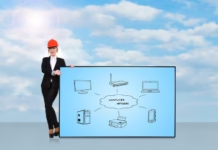Hello, billing wizards and telecom titans! The first thing I want to talk to you about is your billing software. I know, I know, thrilling subject but let me tell you, it’s the beating heart of your business. Consider your billing software the engine of your telecom empire. A clunky, outdated engine? Get ready for parts of it to sputter and a lot of frustration. A sporty, high-tech version? Smooth sailing, baby!
We’re living in an age of hyper-connectivity, yeah? Consumers demand speed, frictionless delivery, and, yes, clear and open billing. But are your systems keeping pace? I’ve watched too many telecoms struggle with legacy systems and endless manual workarounds while revenue slipped through their fingers as an error in billing pops up 12 months later. That’s a complete headache, the one, right? And frankly, it’s completely preventable.
This isn’t just minor changes here and there; we’re talking about a telecom billing reformation! The software you use plays a part in your bottom line, your customer satisfaction, and your own ability to scale and innovate. Old school billing systems can cause lost revenue, angry customers, and, if we are honest, stressful nights for you.
This blog post serves as your cheat sheet to getting through this revolution. — We’ll drill down on the major challenges holding back telecom companies, investigate the hottest innovations and whether it’s time for an upgrade. Go on, ready to say goodbye to the headaches and step into an easier, more profitable future? Let’s get started!

The Good Stuff: Positive Trends.
- Cloud ONLY: That’s HUGE. Everybody’s going to the cloud — it’s cheaper, more flexible and much easier to scale. And companies like Zoho Invoice and Xero have completely mastered this: they offer simple, reachable billing solutions. That means you need to get cloud-ready or you have already fallen behind.
- AI is Automating Everything: Robotic process automation (RPA), automating the grind — invoice generation, payment reminders and the like. This gives your team the freedom to spend time on higher-value work. We are seeing early adoption from companies like Freshworks using AI to get better accuracy and speed, which increases their productivity. This means looking into AI integration for you – it’s a productivity lifesaver.
- Subscription Services Are Exploding The subscription model is taking over the world, and billing software must adapt. It’s not just Netflix anymore; businesses are moving to subscription models as well. This calls for software capable of handling recurring billing, complex pricing structures, and customer self-service portals. How can you assist businesses with a seamless transition into this space?
Negative Trend: What Are We up Against
- Increasing Competition: The billing software market is quickly getting congested. This has led to some established players and a ton of new startups competing over the same piece of pie. This is why differentiation is key here. What is unique about your software?
- Security Concerns: Data breaches are now the order of the day. Security has to be top-notch with sensitive financial information. Those who fail to invest in solid security are in for a world of trouble. See how companies like Stripe approach security — they have it at the heart of their brand. You do not compromise on this.
- Integration Issues: Businesses generally have several software systems, therefore integration is of paramount importance. If your software cannot interact with other software that doesn’t play nicely, you’ll lose customers. Explore opportunities for enhancements in interoperability and collaborations.
Actionable Insights: What You Should Do
- Go Cloud — If you are not already cloud based, you should. And, this is the base for more growths.
- Get into AI: Automate tasks and increase accuracy. This has the effect of improving productivity, making your product more desirable.
- Prioritize Security: Security should be a high priority. Your dedication is demonstrated through certifications and clear security practices.
- Unique Value Proposition: What makes your product different? Embrace your biggest strength, target a niche.
- Integrate, Integrate, Integrate: Make your Software Compatible With Other Systems to Avoid Integration Headaches
Information needs to be current, and the market for billing software has always been dynamic and exciting. As with any trends that will be prevalent in the future, understanding them and acting accordingly can help you navigate the challenges and take advantage of the opportunities. Hope you are all coming to terms with the fact that experimentation and innovation is the name of the game!
- Health Care: Think a big hospital system. They use billing software to manage patient charges, insurance claims and payments. It’s not only about sending bills, it’s about navigating complicated insurance regulations, accurate coding, and timely payment. Imagine the headaches without it — a nightmare for the finance department! This software has kept them above-water.
- Technology: If you work for a software company, they probably have to bill clients for software licenses, support contracts, and custom development work. Other projects include tracking project hours, recurring revenue management, and automated invoice generation. It’s important for managing complicated contracts and monitoring your bottom line. Without it, you’re creating invoices by hand – what a waste of time!
- Automotives: Dealerships, as the name suggests, use billing software to handle the sale of automotive vehicles (like cars, bikes, etc.), parts, and services. They must manage inventory, financing options, and create invoices for customers. Now try to control that manually — the margin for errors is very wide! The entire process can be automated under the billing system which makes it super efficient.
- Manufacturing: A manufacturing business could rely on its billing software to follow the cost of goods sold (COGS), compute margins and bill clients for completed goods. It allows them to monitor the various pricing structures, track their inventory levels, and serve precise cost analysis. This is vital for cost-effectiveness, especially when handling large orders for multiple clients.
- Telecommunications: That is where you all come in! The telecom companies depend on billing software to bill their customers for call time, data and other services. Use cases: examples of how your customers will use your product for different actionsHelp desk: Help desks need billing software to process customer payments. This is a high-volume, high-stakes operation — get it wrong you’ll have angry customers quickly.
- Bonus Tip: Consider how your billing software can connect with other software systems. Seamless integration with CRM or inventory management software can boost efficiency even higher – that’s what the clients are really looking for! Make it easy to use, too. No one wants a convoluted system.
- AI-Driven Automation: Numerous billing software vendors are heavily investing in AI to automate tasks such as generating invoices, processing payments, and detecting fraud. This enhances efficiency and lower the operating cost. For instance, consider a surveillance system that identifies suspicious transactions by learning the business rules, effectively preventing revenue leakage. This is really useful in a highly competitive scene.
- Hyper-Personalization: Customer are demanding personalized experiences. Therre has been an integration of personalized dashboards and communication tools among billing software companies, offering customized billing cycles and payment options. For example, a platform suggesting flexible payment plans based on individual customer usage patterns or even predictive notifications about potential overages. This helps to build loyalty and enhance customer service.
- Integration With Other Business Systems — The ability to easily integrate with your CRM, ERP, and other business applications. As a result, companies are investing time in creating powerful APIs and pre-built integrations to improve the workflow. Picture pulling billing data straight into your sales reports with ease, or automatically refreshing customer records after payment is made — that reduces manual work and makes for more accurate information.
- Subscription-Based Model Support: As more businesses transition to subscription based models, billing software is also developing to support necessary subscription billing features, like tiered pricing, add-ons, and recurring billing. Providers will build out features to manage different models easily, automate renewals and deal with proration if you change service. Telecomsdevices could automatically adjust your bill depending on how much data you downloaded, or add/remove services with minimum disruption.
- Strategic Acquisitions (Inorganic Growth)−: A few players are consolidating the market by acquiring small, niche billing software providers. This enables them to broaden their product portfolio, tap into new customer segments, and access valuable technology. In a fragmented market, this is a very important strategy.
- In organic growth: Partner with other businesses (For instance, payment gateways and data analytics providers. With these partnerships, the billing software can be extended, providing customers with a more complete solution. Having a strong collaboration with a seasoned fraud detection company could greatly increase the security of the billing system and be extremely invaluable to your clients.
- Vertical Markets: Rather than trying to do everything, some businesses are concentrating on certain industries. This helps develop deep expertise and allows for tailored solutions, thus enhancing product-market fit and competitive positioning. For example, telecom billing software needs full-fledged specialization for features that cater to nuances in telecom billing such as, complex call detail records (CDRs) handling.

Outlook & Summary: The future is now (ish)
Hey there, billing buddies! So, we just took a big, deep-dive into how your billing software might, you know, be holding you back. Generating invoices is not all, right? It’s about the whole kit and caboodle: customer experience, operational efficiency, and in the end, your bottom line.
Telecom Billing: The next steps forward
Smart, flexible, fast thinking. In the next 5-10 years, we are witnessing a massive transition. Forget cumbersome legacy systems — we’re talking AI-driven automation, hyper-personalized billing (yes, seriously!), and seamless integration with all the other elements of your telecom ecosystem. But at the same time, do your best to focus on the kind of world you want to create. This is not science fiction; this is the evolution we are already experiencing in others sectors, and telecom billing is about the be the next to catch up in a major way. These will be HUGE: Cloud-based solutions, real-time analytics and subscription management.
NodeJS Applications and Libraries — Former NodeJS Client for Telecommunication Applications.
The truth is the entire telecom software and services world has been upended. Billing software is not an island, it has to get along with CRM, network management, and anything in between. That means investing in future-ready software that can evolve with these changes – otherwise you’re going to be sprinting from behind.
TL;DR: If You Have Content, You Cannot Afford to be Grounded!
This article is not about fear-mongering, it’s about empowerment. The key takeaway? You have a choice. You can choose to stay the same, risk getting left behind, or you can embrace change in your business proactively to put yourself to thrive. You have to begin asking the right questions now. You require the correct software at this time. Telco billing of the future: How an application can help you build a better business, not just a better technology






